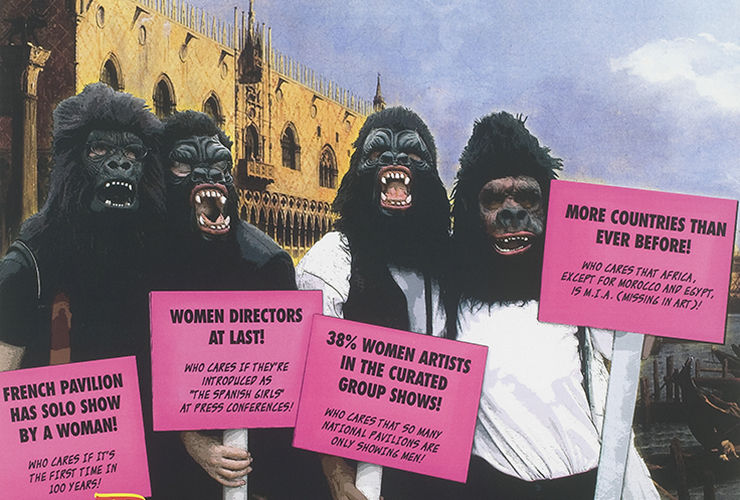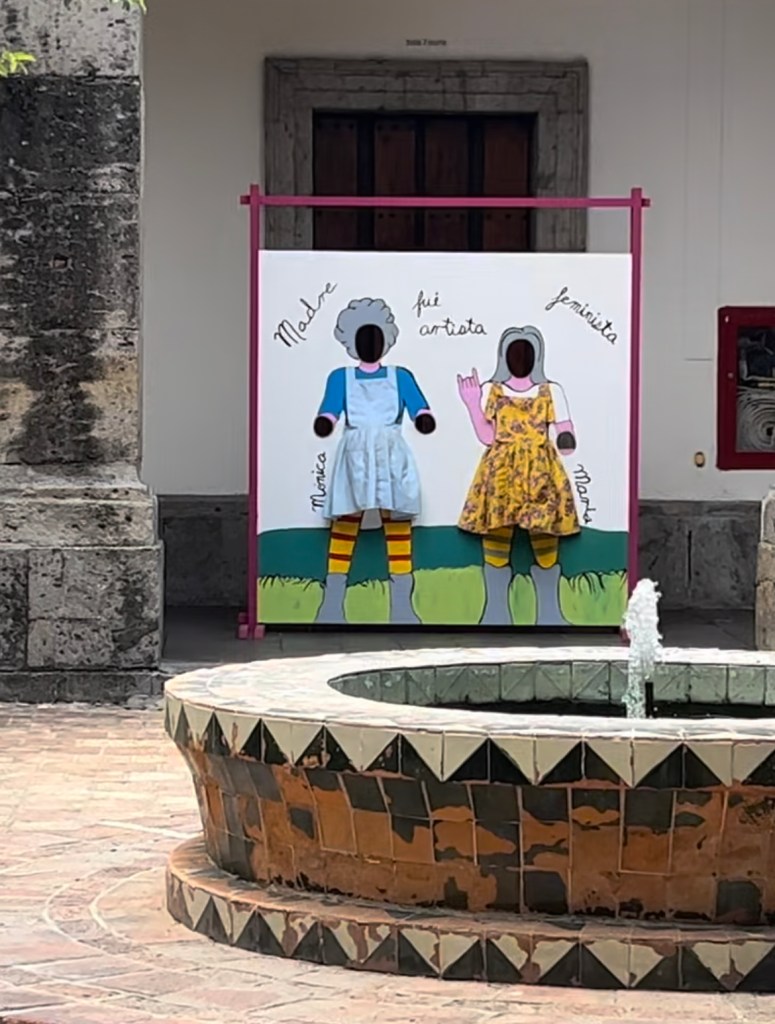Polvo de Gallina Negra: 40 Años de Polvo de Gallina Negra. Arte Feminista en México
During my visit to el Museo Cabañas, I was able to see an exhibition of the feminist art collective, Polvo de Gallina Negra (below on left). This exhibition was curated by Julia Antivilo Peña and María Laura Rosa.
I must admit, this was my first time hearing of this collective; all the while I was completely tuned in, my background in art history through a norteño/x lens prompted me to make the connection between this second-wave feminist collective and the Guerrilla Girls (below on right: hence the gorilla masks).


Both groups utilized performance art as a point of humorously protesting the patriarchal manifestations that limited the creative capacity of women in the arts.
Polvo de Gallina Negra (PdGN) named themselves after a home remedy to un mal de ojo (an evil eye) and was formed in 1983, México City (CDMX) by three members: Mónica Mayer, Maris Bustamante, and Herminia Dosal. Como un buen Mexicano/x, in order to make light of not-so ideal situations., we turn to cracking jokes. The topic of motherhood and gender roles “inherited” by women was central to PdGN’s works as they often used in their works.

The exhibition consisted of written letters, artwork by the members, photographs & home videos of their performances. The curatorial team used the ample space of the galleries as there was much to read for the context of their performances and manifestations. Growing up como mujer added further necessary context and are details that could only be experienced, not read about. Perhaps because of the nature of their social commentary, the exhibition organically leaned too heavily on the girl-hood experience. In other words, if you didn’t grow up as a femme, the true weight of girl-hood and the hold on self perception will resonate for only a portion of the exhibition’s audience. What might have personified the issues PdGN were satirically commenting on would have been factual evidence that isn’t based on the ideology of feminism. For example, in Mexico, feminicidio is a wide-spread issue that results in the murder of women and often goes uninvestigated that is still happening today. Many of the families of the victims are the ones demanding justice, and sadly do not receive the justice their loved one


At the end of my walkthrough there were two interactive pieces, one being a recreation of the prop that PdGN used en su tiempo (above) and the other was an interactive piece by one of the PdGN members, Mónica Mayer. This interactive piece made an impactful addition to the exhibition and sheds light on the experiences of girl-hood. El Tendedero (The Clothing Line) consisted of pieces of paper with written prompts that were held up by clothing pins (below).

On the paper there was this question, “¿Te has sentido maltratada y violentada como mujer? ¿Que pasó? ¿Cómo te sentiste?”(Have you felt mistreated and violated as a woman? What happened? How did you feel?). These were some of the many replies:
Si, en el transporte público y realmente se sintió muy muy mal.
Translation: Yes, in public transport and it actually felt very very bad.
Me sentí inferior, me sentí que no valía al momento de que me gritaron. Es lo peor que uno como mujer puede experimentar.
Translation: I felt inferior, I felt that I wasn’t worth anything at the moment I was yelled at. It’s the worst a woman could experience.
No es motivo de “risa” ser acosador.
Translation: It is not okay to harass someone because it’s “funny”.
Si, fue abusada por mi padrastro días como hoy. La policía no ha hecho justicia.
Translation: Yes, I was abused by my step-father on days like today. The police have not brought any justice.
Ser valiente y no quedarme.
Translation: To be brave and not stay.
There were many more from people who wrote about their own anecdotes and how machismo silenced them or a loved one. The amount of clothes pins were too many to count, some written personal stories even sharing a clothes pin. This visual aid embodied the trauma and struggles that PdGN themselves faced and many more during their time identified with. This installation brought the context behind PdGN back full circle for its viewers, regardless of your experiences growing up. PdGN’s work serves as a documentation of feminismo that still echoes throughout Latino/x America today.
Leave a comment